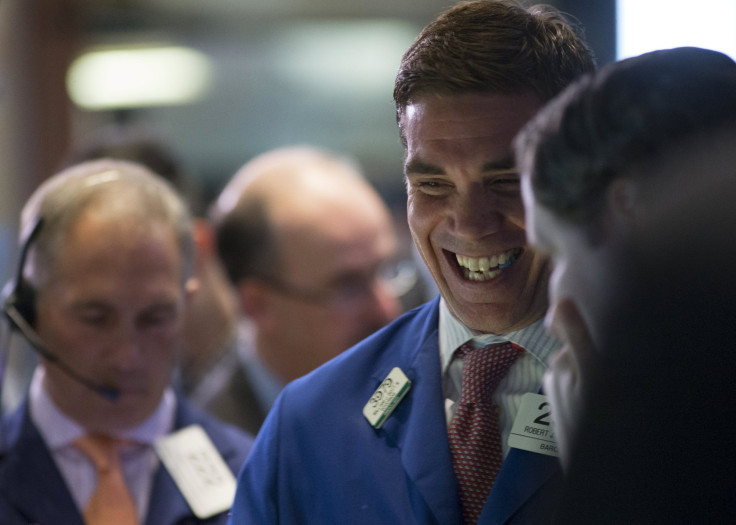Dow Jones Industrial Average Rallies 150 Points As Microsoft Corporation (MSFT) Jumps 2%

U.S. stocks rebounded Thursday, with the Dow Jones industrial average leaping 150 points after three days of losses. All 30 stocks in the Dow were trading higher Thursday, while all 10 sectors in the S&P 500 rallied, pushing the index close to a record high.
Thursday’s gains were driven by the technology and consumer-staples sectors.
The Dow (INDEXDJX:.DJI) climbed 150 points, or 0.82 percent, to 18,227. The Standard & Poor’s 500 index (INDEXSP:.INX) rose 14.02 points, or 0.7 percent, to 2,115. And the Nasdaq composite (INDEXNASDAQ:.IXIC) gained 44.23 points, or 0.9 percent, to 5,026.
The Microsoft Corp. (NASDAQ:MSFT), the world’s largest software company, led the Dow higher, gaining 2 percent to $48.82. Shares of Microsoft have gained after Deutsche Bank upgraded the stock’s rating to “Buy” from “Hold” Wednesday, when it also raised its 12-month price target to $55 from $44.
Shares of the Kohl’s Corp. (NYSE:KSS) tumbled 11 percent Thursday after the department-store company’s same-store sales, a key metric in the retail sector, rose 1.4 percent last quarter, which was below the analysts’ consensus forecast of 2.6 percent.
Puma Biotechnology Inc. (NYSE:PBYI) plunged 19 percent after the biopharmaceutical company reported disappointing breast-cancer drug results. A Phase 3 clinical trial of its experimental breast-cancer drug neratinib showed it improved disease-free survival for certain breast-cancer patients, but only by 2.3 percent. The drug’s backers had expected to see improvement of 3 percent.
Notable companies reporting after the closing bell Thursday include retailer Party City Holdco Inc., gaming company King Digital Entertainment, department-store firm Nordstrom Inc., restaurant chain El Pollo LoCo Holdings Inc. and chip-equipment maker Applied Materials Inc.
Jobs
Fewer Americans filed new claims for unemployment benefits last week compared with the previous week. Claims hovered around a 15-year low, as they fell 1,000 to a seasonally adjusted 264,000 for the week ended May 9, the U.S. Labor Department said Thursday. Economists had expected last week’s jobless claims to rise 10,000 to 275,000, according to analysts polled by Thomson Reuters.
The decline in jobless claims provide further proof that the weak March jobs report was an aberration, Stuart G. Hoffman, chief economist at PNC Financial Services Group, said in a research note Thursday. U.S. job growth rebounded to 223,000 in April from 85,000 in March, and, with claims well below 300,000 per week, job growth will continue to run at a 200,000-plus pace in the near term, Hoffman said.
“This is more than enough to keep up with growth in the labor force, and thus the unemployment rate will continue to decline,” Hoffman said.
Producer Prices
Separately, U.S. producer prices continued to decline last month, signaling the U.S. Federal Reserve will likely raise interest rates later rather than sooner as inflation is still muted. The producer price index fell 0.4 percent last month after rising 0.2 percent in March, the Labor Department said Thursday.
“We believe inflationary pressures will rebound in the coming months,” Gregory Daco, head of U.S. macroeconomics at Oxford Economics, said in a research note Thursday. “Base effects from the oil price plunge last year, gradually dissipating effects from the stronger dollar, and generally stronger U.S. activity will lead to rebound inflation in the second half of 2015.”
© Copyright IBTimes 2024. All rights reserved.












